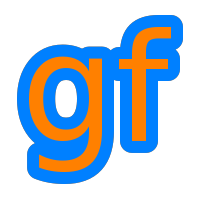35 #ifndef DOXYGEN_SHOULD_SKIP_THIS
234 const Glyph&
getGlyph(
char32_t codepoint,
unsigned characterSize,
float outlineThickness = 0.0f);
251 float getKerning(
char32_t left,
char32_t right,
unsigned characterSize);
297 std::map<uint64_t,
Glyph> glyphs;
302 GlyphCache createCache(
unsigned characterSize);
303 Glyph createGlyph(
char32_t codepoint,
unsigned characterSize,
float outlineThickness, GlyphCache& cache);
305 bool setCurrentCharacterSize(
unsigned characterSize);
311 unsigned m_currentCharacterSize;
312 std::map<
unsigned, GlyphCache> m_cache;
315 #ifndef DOXYGEN_SHOULD_SKIP_THIS
A glyph.
Definition: Font.h:57
bool loadFromFile(const Path &filename)
Load the font from a file.
float getLineSpacing(unsigned characterSize)
Get the line spacing.
bool loadFromMemory(const uint8_t *data, std::size_t length)
Load the font from a file in memory.
RectF bounds
Bouding rectangle of the glyph, in coordinates relative to the baseline.
Definition: Font.h:58
Font(Font &&other)
Move constructor.
float advance
Offset to move horizontally to the next character.
Definition: Font.h:60
const Glyph & getGlyph(char32_t codepoint, unsigned characterSize, float outlineThickness=0.0f)
Retrieve a glyph of the font.
A character font.
Definition: Font.h:130
RectF textureRect
Texture coordinates of the glyph inside the font's texture.
Definition: Font.h:59
Font()
Default constructor.
Font(const Font &)=delete
Deleted copy constructor.
Font & operator=(Font &&other)
Move assignement.
bool loadFromStream(InputStream &stream)
Load the font from a custom stream.
A texture with a single alpha channel.
Definition: Texture.h:474
#define GF_API
Definition: Portability.h:35
Font & operator=(const Font &)=delete
Deleted copy assignement.
const AlphaTexture * getTexture(unsigned characterSize)
Retrieve the texture containing the loaded glyphs of a certain size.
float getKerning(char32_t left, char32_t right, unsigned characterSize)
Get the kerning offset of two glyphs.
void generateTexture(unsigned characterSize)
Generate the texture for a given character size.


 1.8.8
1.8.8